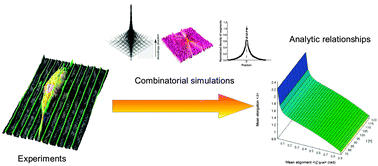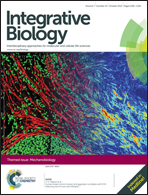Deterministic control of mean alignment and elongation of neuron-like cells by grating geometry: a computational approach
Abstract
Neuron-like cells are driven by their surrounding environment through local topography. A causal mechanotransductive web of topography–force relationships influences and controls complex cellular phenomena such as growth and alignment. This work aimed to provide a computational framework able to model the behaviour of neuron-like (PC12) cells on gratings, accounting for the twofold ability of topographical cues to simultaneously align and enhance the growth of cells. In particular, starting from the mechanical behaviour of the growth cone and filopodia, the effect of grating geometry (e.g., the periodicity and the size of grooves and ridges) on the neuritic mean alignment angle and on the outgrowth rate of cells was explored through theoretical tools and combinatorial simulations, which were able to predict (R2 > 0.9) experimental data in a time range of 72–120 hours.

- This article is part of the themed collection: Mechanobiology

 Please wait while we load your content...
Please wait while we load your content...